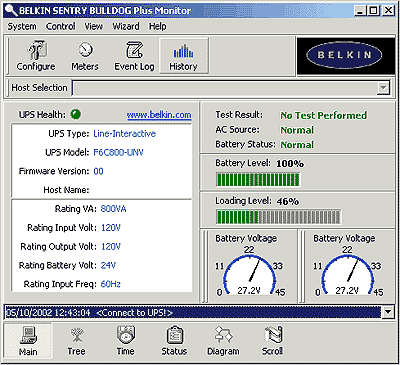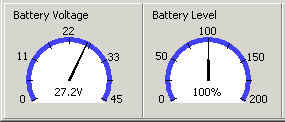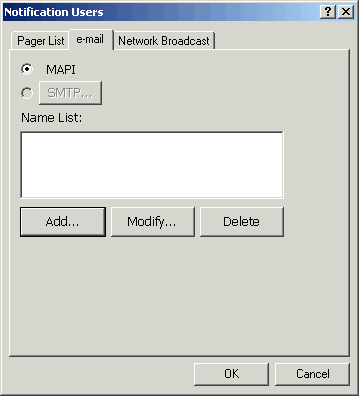So what does "VA" stand
for, and why is it used so much to describe different models of UPS's? Well "VA" is short for Voltage-Amps
and it describes how much load a UPS can
handle.
Think of VA as clock frequency for a CPU - the higher it is
the more powerful the unit. When dealing with VA, you always want to remain
under that given number. If you're under it the UPS will function properly and
depending on how many devices it will last x amount of time. If you go over the
VA rating, you'll be asking for trouble. UPS's are not designed to run higher
then their given ratings and the UPS will be running at over it's maximum load
which will result in much lower performance during a black out - and possibly
even damage to the batteries.
The UPS 800VA can be attached to a computer via serial
port or USB port for UPS monitoring. The software Belkin supplies with the UPS
800VA is very easy to use and quite self
explanatory.

With a computer and 17" monitor attached, the
UPS 800VA has a 46% load. While that may not sound very good, this
is a home use UPS, not a professional/server UPS so you can still get
in a printer and something else not to power
hungry.

As you can see, the the program is fairly easy to use,
about the only annoying thing was the spinning Belkin logo! The Belkin Sentry software
is also able to log any spikes or dips in electricity there is
as long as the program is loaded up and running so you can effectively
gauge how well, or poor you wall power actually
is.

The software can even e-mail out to people
when it's in use or in trouble! Other features the Belkin monitor software has
is the UPS can shut down the computer when the battery reaches a critically low charge
during a power outage for example. It really is a remarkable little unit -
able to interact with the computer and operate things unattended.
